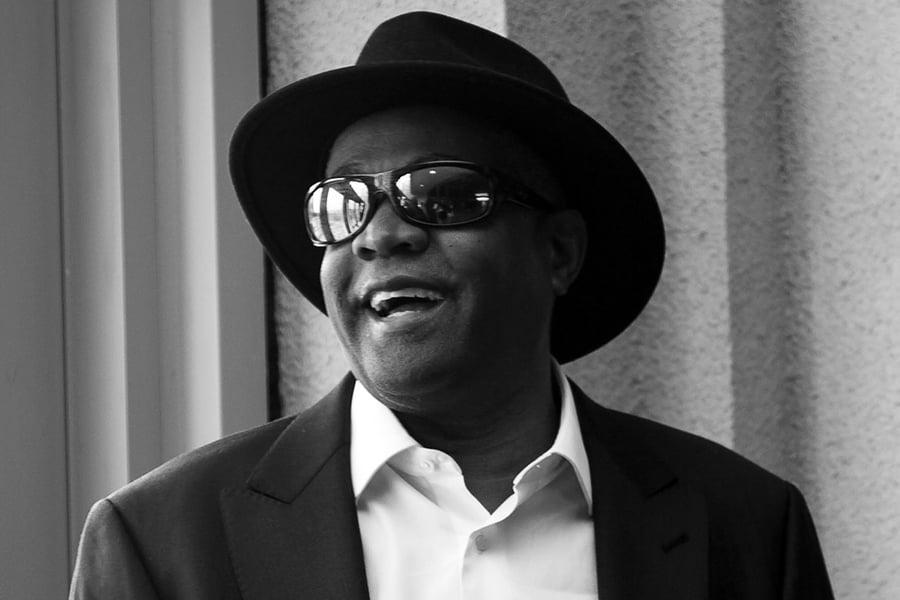Ronald “Khalis” Bell, the singer, songwriter and saxophonist whose group Kool and the Gang became one of the most celebrated and musically eclectic funk bands in the 1970s and beyond, died Wednesday at his U.S. Virgin Islands home at the age of 68, a rep confirmed to Rolling Stone. The cause of death was unknown.
Over the course of 23 albums, starting with 1969’s Kool and the Gang through the 2013 Christmas album Kool for the Holidays, the band morphed from upstart jazz unit to leading funk ensemble to smooth pop-soul group with the addition of vocalist James “J.T.” Taylor in 1979. Bell, who adapted the name Khalis Bayyaan later in life, co-wrote many of the group’s perpetual life-event earworms — including “Ladies Night,” “Jungle Boogie” and “Celebration” — that have become embedded into the national consciousness.
In 1964, Bell and his teenage brother Robert “Kool” Bell, unable to afford drums, would collect old paint cans in their Youngstown, Ohio neighborhood and use them as makeshift percussion instruments. It was a crude way to learn music — the brothers would figure out different tones depending on how much paint was in each can — but it launched a musical career that lasted more than 50 years.
After moving to Jersey City, New Jersey, the duo set up shop in front of the subway in New York’s Greenwich Village, adding cheap drums to their paint-can ensemble. “We’d make about five dollars in three weeks,” Ronald Bell told Rolling Stone in 2015.
The Bell brothers went on to form the Jazziacs with high school friends Spike Mickens, Dennis Thomas, Ricky Westfield, George Brown, and Charles Smith, eventually transforming into Kool & the Flames and, finally, Kool & the Gang. The group released their eponymous debut in 1970, which laid the groundwork for their groundbreaking fusion of jazz and funk. “You had a hard time trying to get us to play R&B,” Ronald told Rolling Stone. “We were diehard jazz musicians. We’re not stooping to that. We didn’t really try to do that until now.
“We used to play a lot of percussion in the streets in the Sixties, go to the park and start beating on drums and stuff in the street … We were very street percussive [on that album], so we blended that element with listening to jazz,” he added. “You could hear the jazz element. You could hear the Motown element.”
In 1972, the group released their first self-produced album Music Is the Message — Bell called it their “maiden voyage” album — featuring the wah wah-driven hard funk of “Love the Life You Live.” “We were experimenting with synthesizers,” Bell told Rolling Stone, citing James Brown, John Coltrane and Herbie Hancock as major influences. “You had groups like Chicago and Blood, Sweat, and Tears. You had that synergy going in the air. We were listening to that and trying to find our own way.”
Love Music?
Get your daily dose of everything happening in Australian/New Zealand music and globally.
The group hit their breakthrough, though, with 1973’s aptly titled fourth studio album Wild and Peaceful, a mix of raucous, brassy funk and mellifluous soul. The album would spawn three Top 10 hits — “Funky Stuff,” “Hollywood Swinging” and “Jungle Boogie” — all co-written by Bell and establish the group as both a preeminent pop chart force and funk powerhouse alongside Earth, Wind and Fire, the Isley Brothers and Sly & the Family Stone.
The band dominated much of the 1970s with funk-pop classics Light of the Worlds (1974), Spirit of the Boogie (1975), Open Sesame (1976). With 1979 Ladies’ Night (1979), the group added vocalist James “J.T.” Taylor and incorporated a smoother pop sound with hits like “Too Hot.”
As many of their funk contemporaries found difficulty adjusting from the Seventies funk peak to the 1980s, Bell’s songs for Kool and the Gang would go on to become some of the band’s biggest hits. 1980’s Celebrate! featured the band’s standout “Celebration,” which remains a perennial wedding staple 40 years later. The hits, all co-written by Bell, continued: 1981’s “Get Down On It” emphasized the group’s stronghold on horn-driven funk, 1983’s “Joanna” channeled the group’s love of doo-wop into a romantic ode to the titular character, and 1984’s Emergency became the group’s biggest-selling album on the back of hits “Fresh,” “Misled” and “Cherish.”
The group found a new generation starting in the late 1980s as sample fodder for countless hip-hop producers. “After Public Enemy, I was all in [with hip-hop],” he told Rolling Stone in 2015. “The music was all new to me. I sat and listened to Fear of a Black Planet and was thrilled. I thought that was amazing. You can practically hear [drummer] George [Brown] playing that break beat. You can hear our music in the background. You know it was compound and compact, but you can hear Kool & the Gang music in all that hip-hop.”
Bell spent most of the 1990s and 2000s touring as a legacy group with the band, entertaining multiple generations with their string of hits. The group has sold more than 70 million albums worldwide, with 31 of their albums going either gold or platinum. Shortly before his death, Bell was working on a solo album titled Kool Baby Brotha Band alongside a series of animated shorts called “Kool TV.”
This story is developing
From Rolling Stone US



































